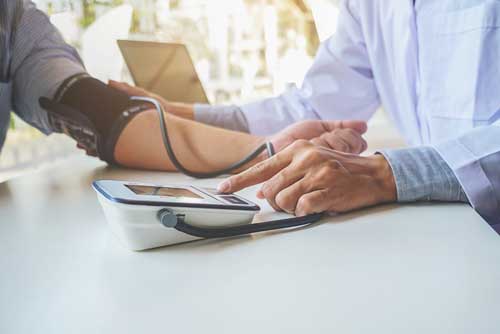No one wants to take pills they don’t need to.
But millions of patients are taking unnecessary hypertension medications because their doctors use incorrect procedures when taking blood pressure readings. This can result in falsely high numbers and unneeded prescriptions.
In January, doctors met for a major blood pressure symposium in Pittsburgh. Healthcare professionals and clinicians from around the country were tested on how accurately they measured patients’ blood pressure.
Of 30 healthcare providers, only three passed the test and provided accurate readings. Ninety percent of the providers messed up the tests.
This confirms a recent study that found that 20% of patients who’ve been diagnosed with high blood pressure actually don’t have it. That’s 10 million Americans taking hypertension medications for no reason.1
A task force at the Pittsburgh symposium concluded that “mistakes in the physician’s office” routinely lead to “unnecessary medication” for hypertension.2
7 Common Blood Pressure Testing Mistakes
The task force has issued a report of the seven most common blood pressure testing errors. One of them can add 50 points to your reading.
When your doctor tests you… or if you test yourself at home, make sure to avoid these errors.3
- Having a full bladder: This can add 10-15 points to your reading. You should always empty your bladder before measuring blood pressure.
- Sitting with legs crossed: It can increase readings 2-8 points.
- Slouching with unsupported back/feet – Poor support when sitting can increase your reading by 6-10 points. Make sure you’re in a chair with your back supported and feet flat on the floor or a footstool.
- Wrapping the cuff over clothing: This common error can add 5-50 points to your reading. Be sure the cuff is placed on a bare arm.
- Using a cuff that is too small: Your pressure may read 2-10 points higher. Men with large biceps may need a bigger cuff.
- Talking while testing: Answering questions, talking on the phone, etc. can add 10 points. Stay still and silent to ensure an accurate measurement.
- Holding up your arm: Your arm should be supported. Rest it on the arm of a chair, a counter, desk, or another surface that is level with your heart.
Dr. Michael Hochman is a member of the blood pressure task force. He’s also an associate professor of clinical medicine at the University of Southern California.
Dr. Hochman said that avoiding these mistakes can mean the difference between being put on a drug or not.
“These simple things can make a difference in whether or not a person is classified as having high blood pressure that requires treatment,” he said.
The next time you are at your doctor’s office, make sure that you—and your healthcare providers—are following the new recommendations for getting accurate blood pressure readings. Bring a copy of this article with you and make sure your test is done correctly.
High blood pressure is just one more thing to worry about as we get older. But recent studies show that the symptoms of aging are just like any others. They can be treated or eliminated. Go here to discover specific ways you can stop the clock – and even turn it back.
Like this Article? Forward this article here or Share on Facebook.
References:
1 https://medlineplus.gov/ency/article/007484.html
2 https://consumer.healthday.com/circulatory-system-information-7/blood-pressure-news-70/7-mistakes-that-can-boost-your-blood-pressure-reading-733512.html
3 https://newsroom.heart.org/news/knowledge-gaps-in-getting-accurate-blood-pressure-reading

